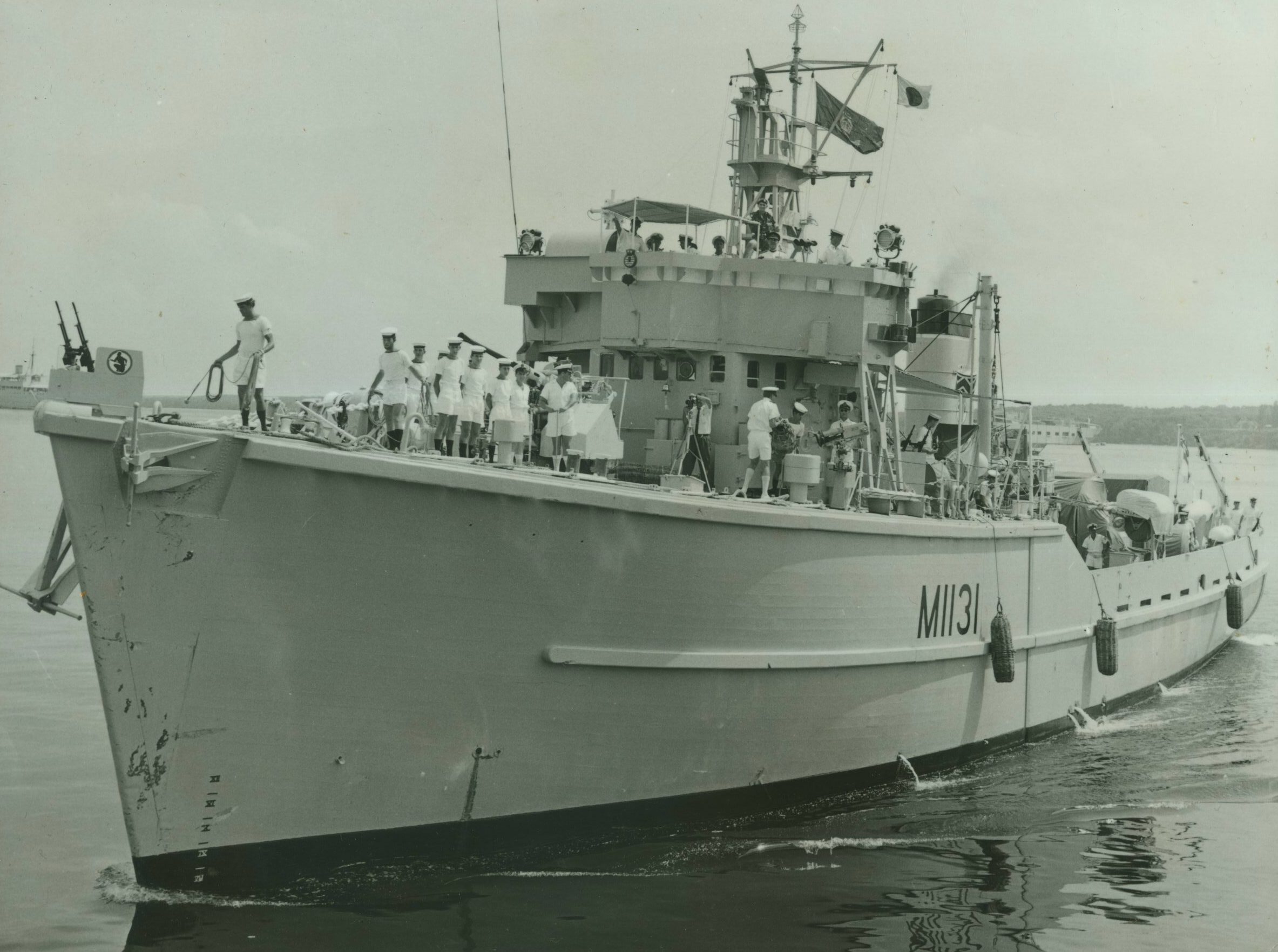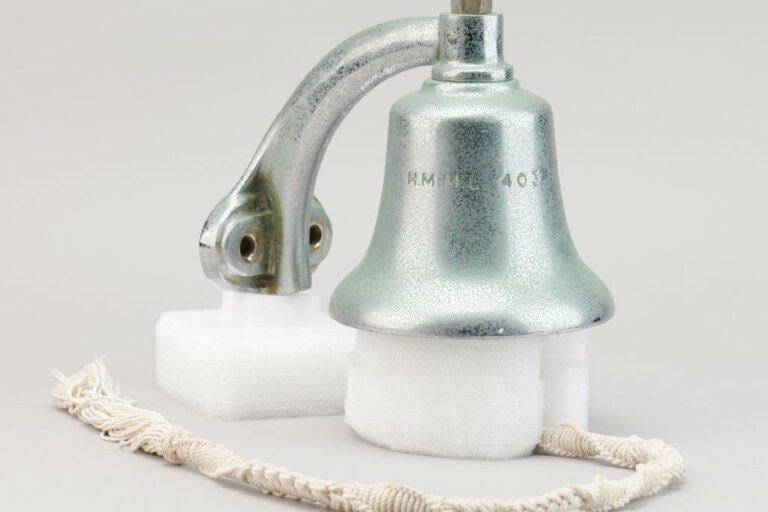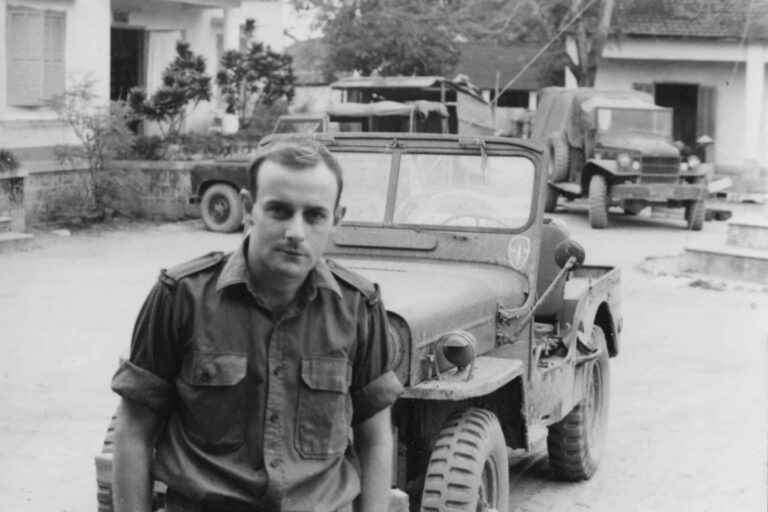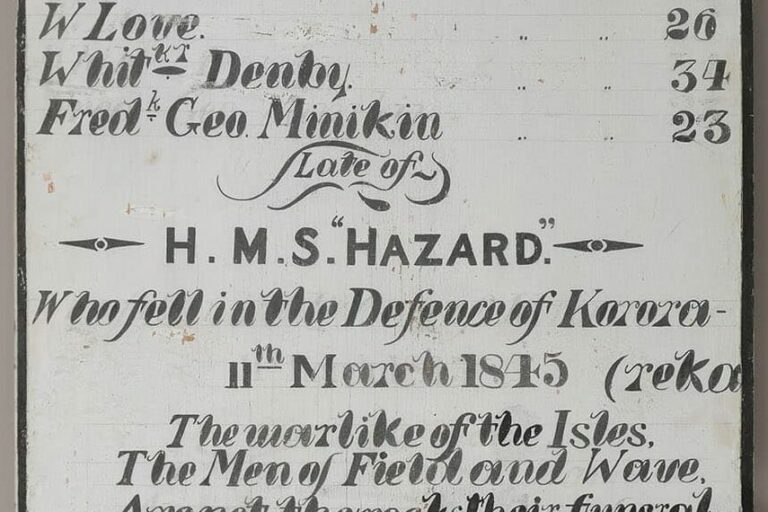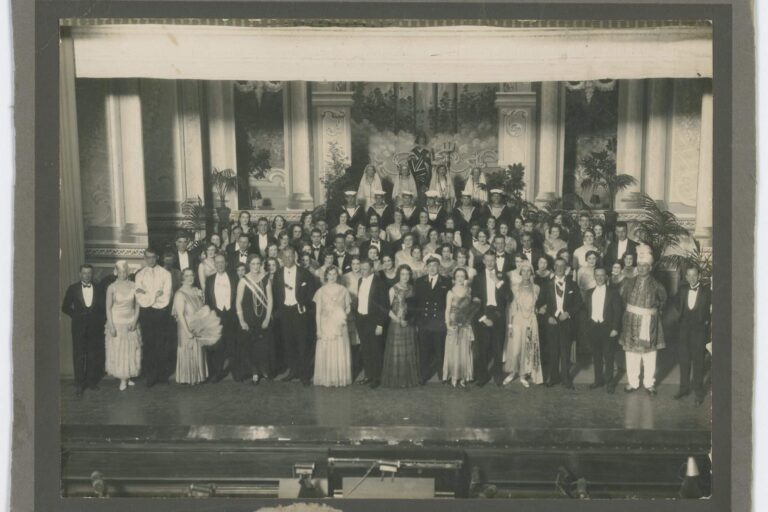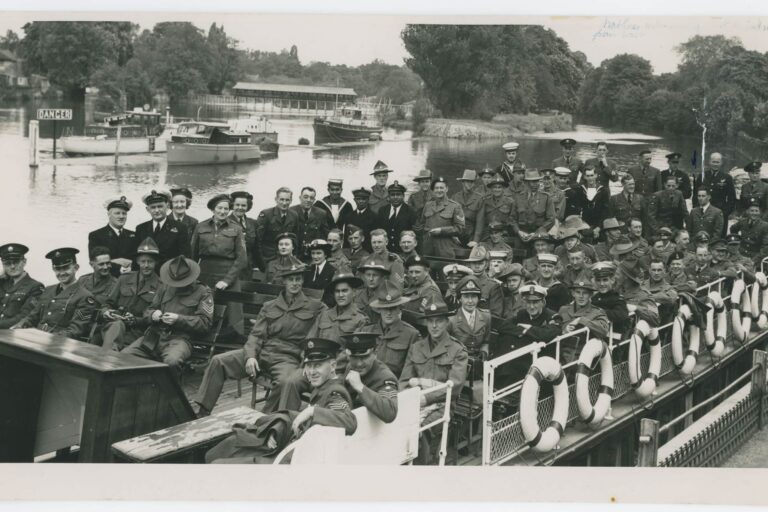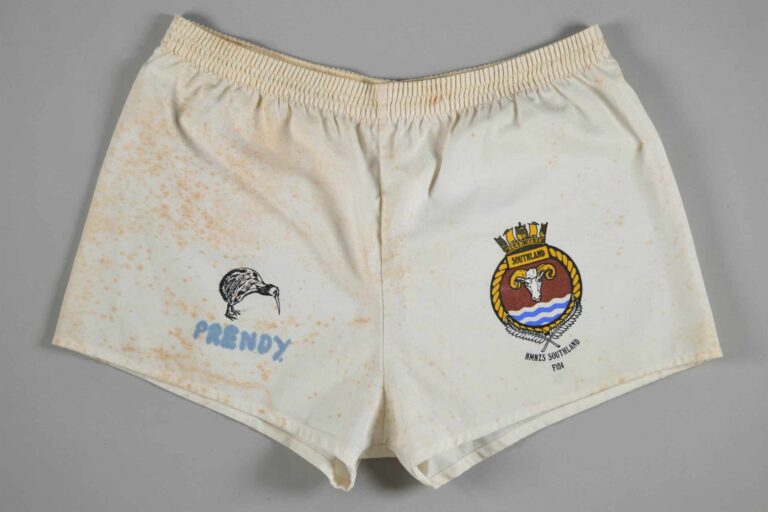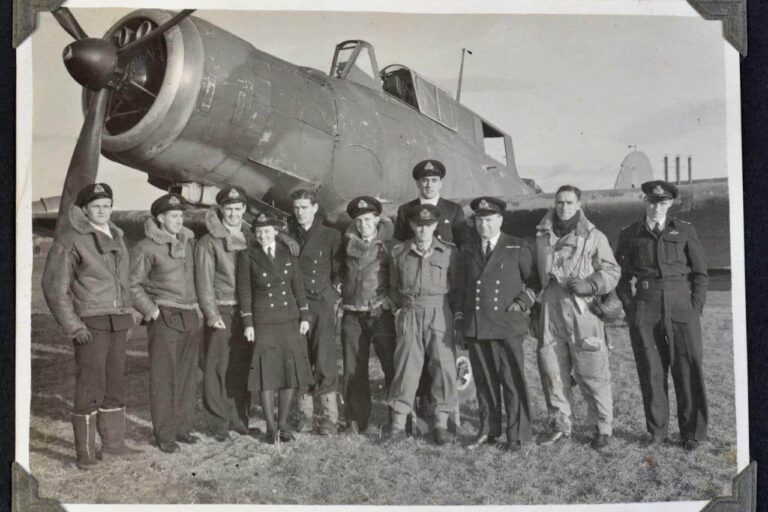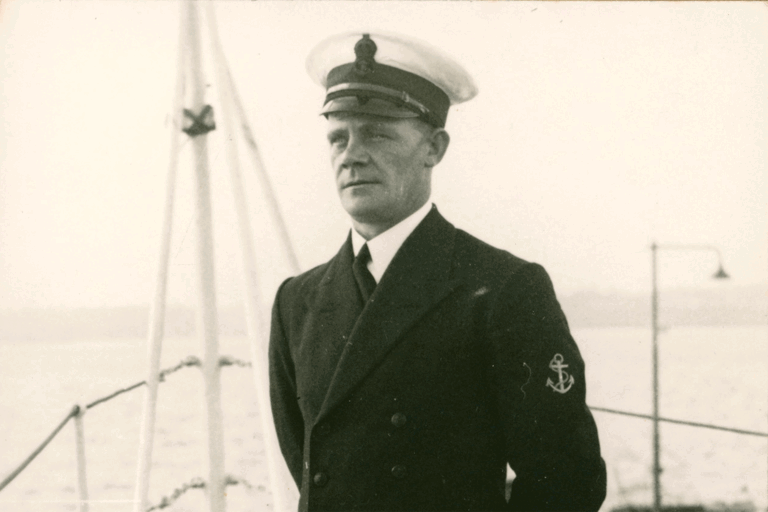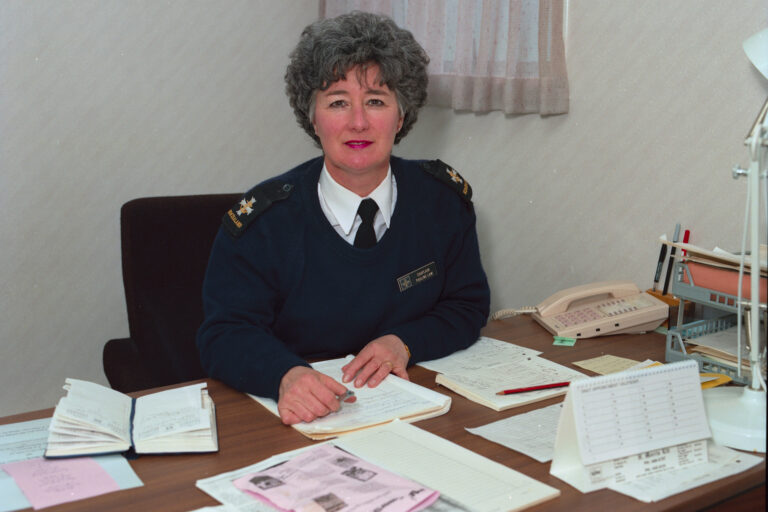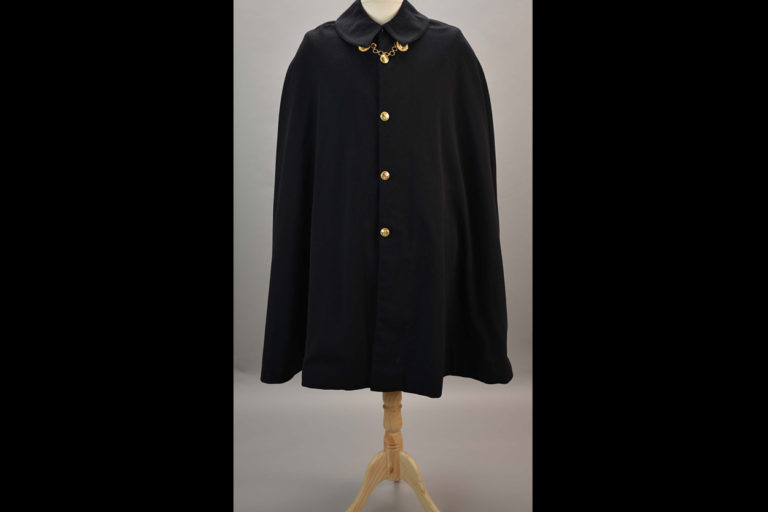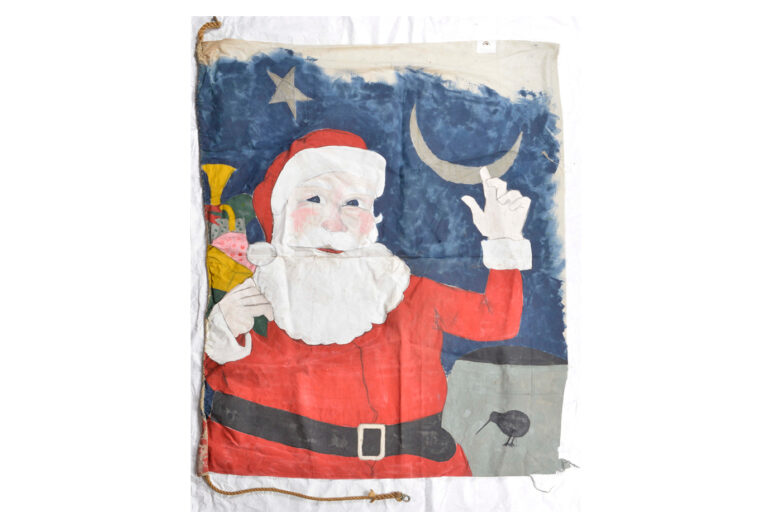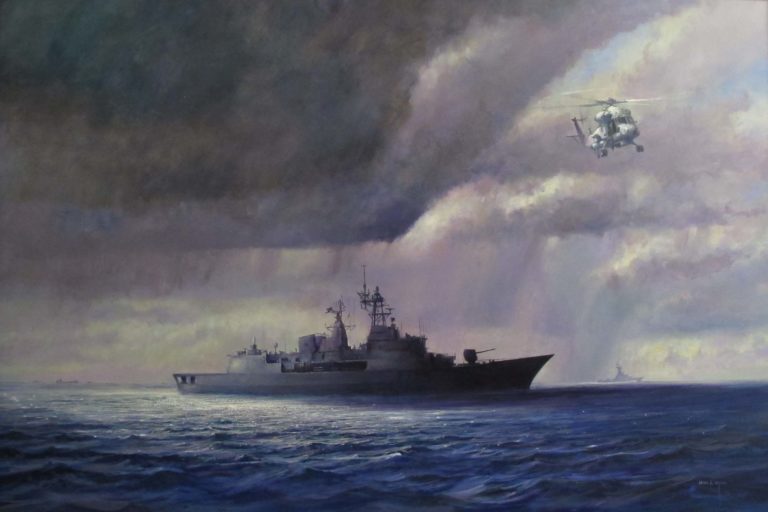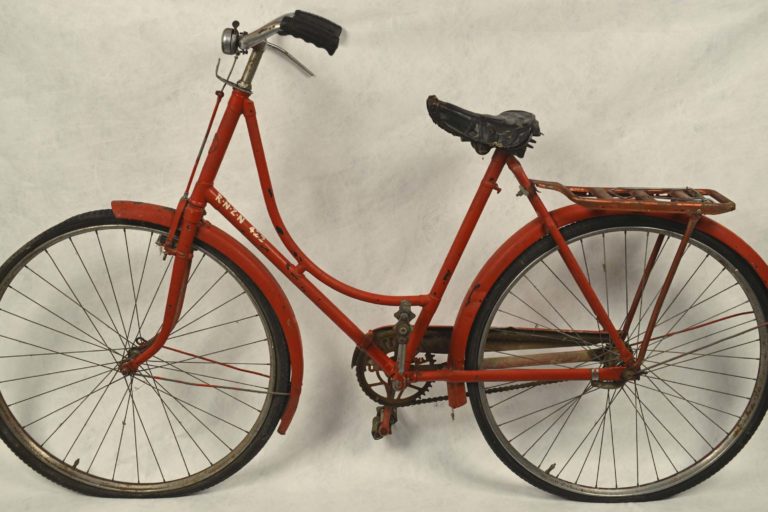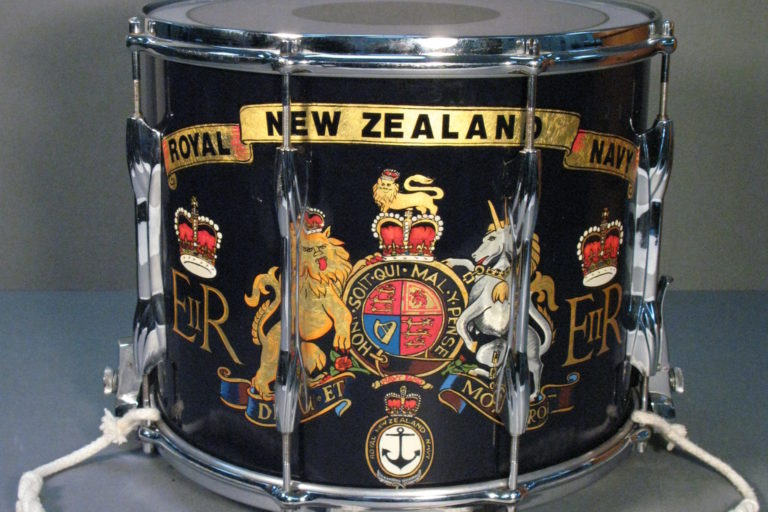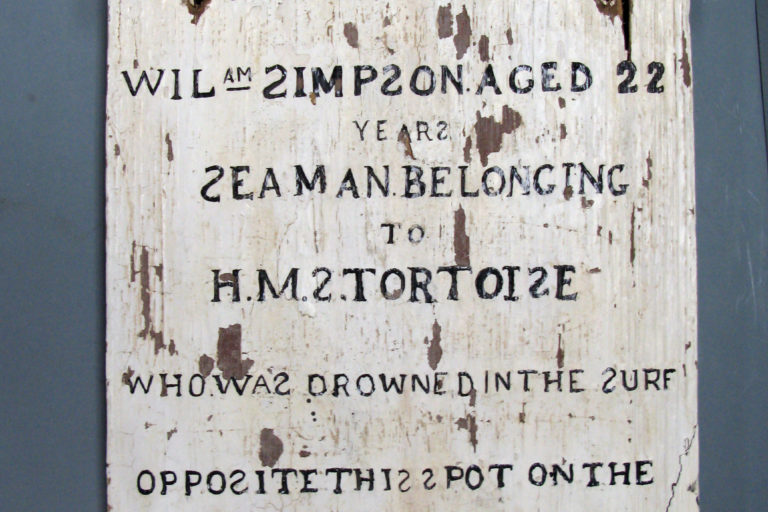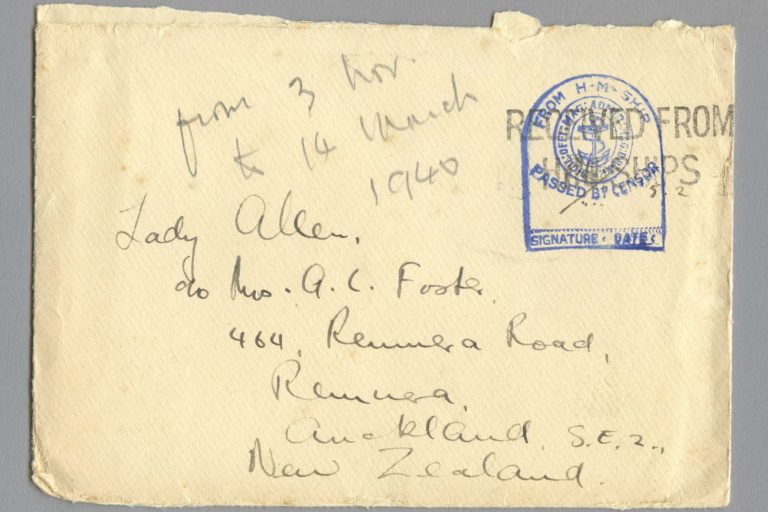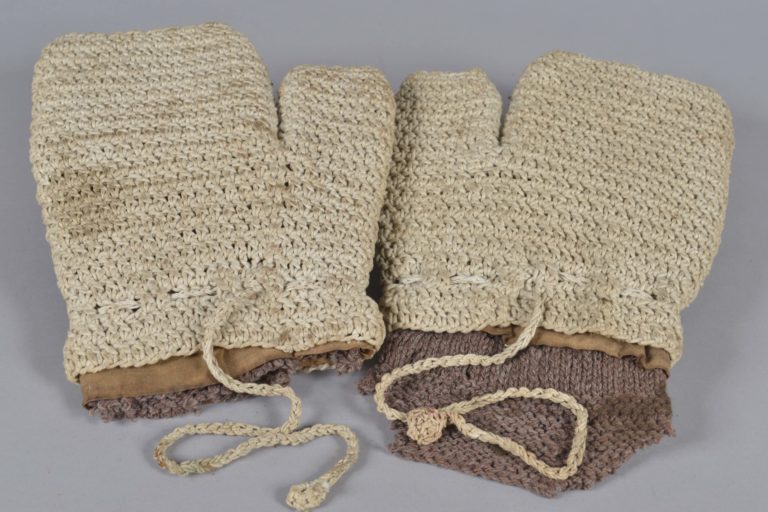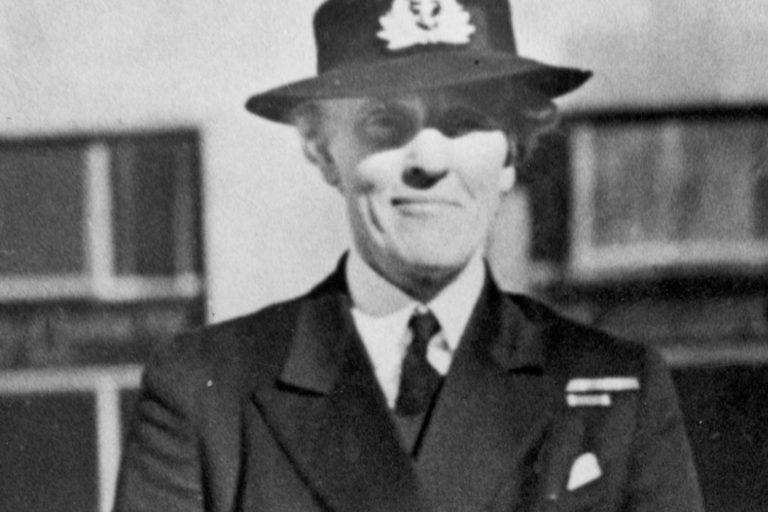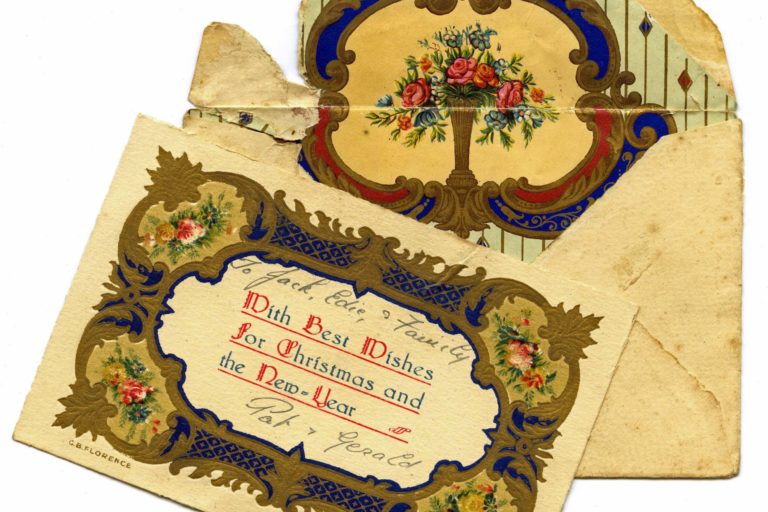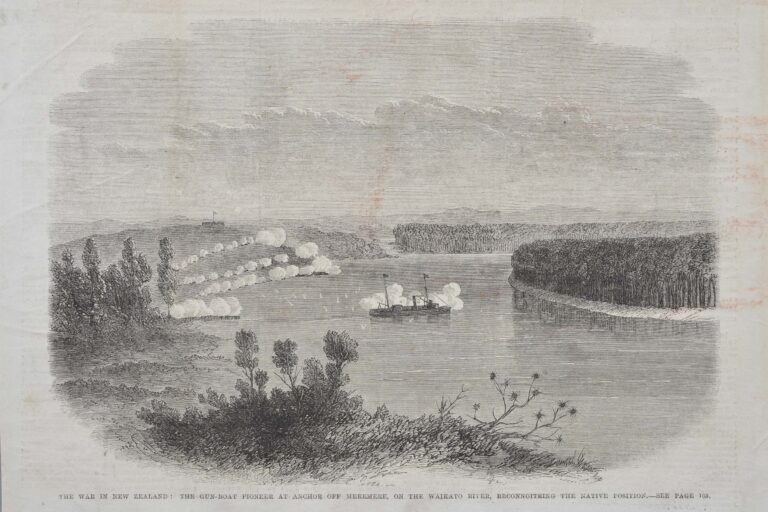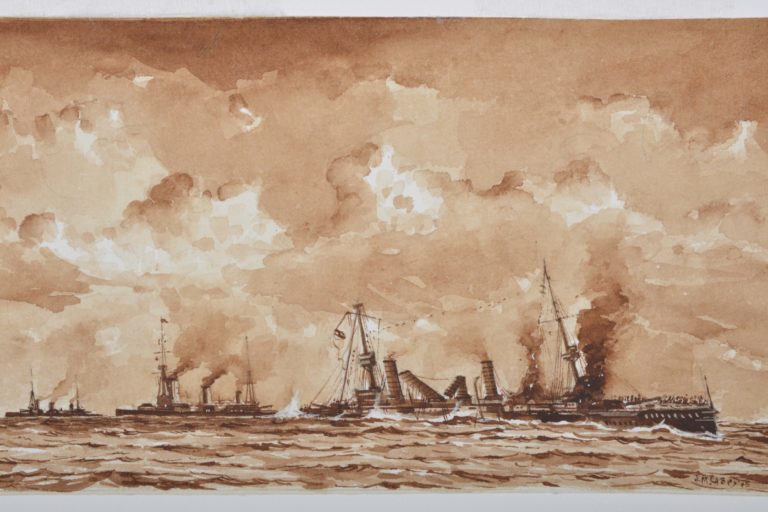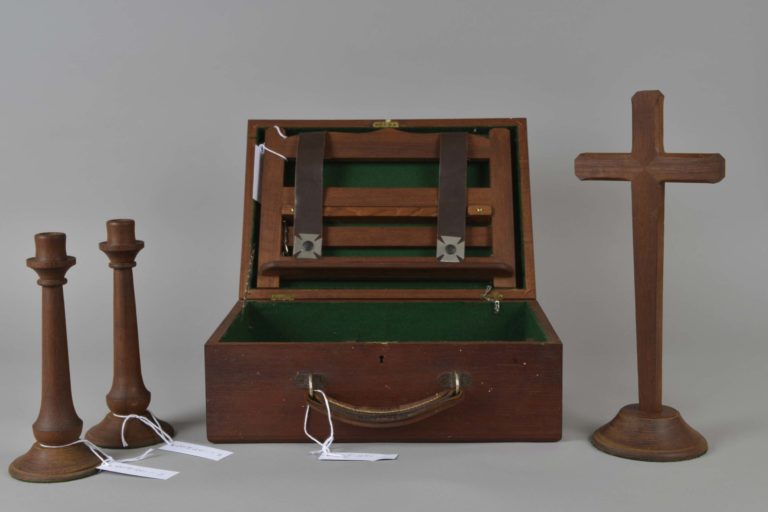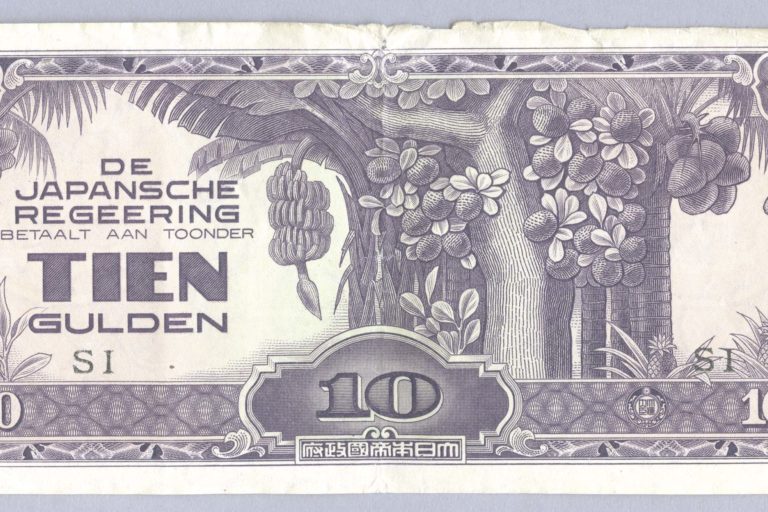The final hostile naval action of Confrontation occurred on the morning of 28 June 1966.
The action took place near the Horsburgh Light at the eastern end of the Singapore Strait, when HMNZS Hickleton intercepted a kumpit [the naval term for a sampan] carrying three, uniformed men and a boatsman.
The kumpit was later found to be returning from an abortive attempt to land on the south-east coast of the Malay Peninsula. Hickleton had departed from the Sarawak patrol area the previous day bound for Singapore.
During the passage the crew were employed preparing the ship for a planned visit by the Governor General of New Zealand, Brigadier Sir Bernard Fergusson GCMG, GCVO DSO and OBE.
All portable weapons were unmounted and stowed away and the ammunition returned to the ship’s magazine. The weapons of the day were scrubbing paint brushes as the crew spruced up the ship from masthead to waterline.
At about 0930, while approaching the Singapore Straits in fine weather, the 20 foot (6m) kumpit, powered by a small outboard motor, was sighted about three miles north west of the Horsburgh lighthouse.
The craft was about two hundred yards off Hickleton’s starboard bow tracking south across the ship’s path. The Officer of the Watch, Sub Lieutenant K.F. Wilson observed the craft was carrying three men in military uniform and a boatman.
He promptly called the Commanding Officer Lieutenant Commander P.N. Wright, who in turn ordered ‘Approach Stations’ (stations for approaching a suspicious vessel). Buckets, scrubbers, paint pots and rags were left where they were as the crew scrambled to arm the ship.
As Hickleton passed astern of the kumpit and turned south paralleling its track the crew brought up and mounted tile bridge and port quarter Bren guns, port side twin Vickers machine guns and approach party’s Lanchester machine guns.
Loaded magazines followed right behind. Meanwhile, Lieutenant Commander Wright took control from the port bridge wing and Midshipman P. Churchill, manned the conning voice pipe.
Sub Lieutenant Wilson plotted the ship’s position every minute as the two vessels moved towards shallow reef water to the south.
The ship approached to within 20 yards of the craft and ordered it to stop. The ship’s interpreter had been left at Kuching so Sub Lieutenant Wilson repeatedly called the Malay word Berhenti (Stop from his own knowledge of the local language gained from the local road traffic stop signs) a through powered megaphone.
The repeated verbal and hand signal orders to stop were ignored, While the kumpit could not out run the ship its manoeuvrability enabled it to keep turning back on itself when Hickleton tried to get it alongside.
After about 10 and minutes of manoeuvring around each other, at less than 50 yards, Lieutenant Commander Wright ordered the bridge Bren gun to fire single shots across the kumpit’s bow.
These warning shots were also ignored. Further shots were then aimed at the craft’s outboard motor in an effort to immobilise it. One of the Indonesians then lifted a heavy machine from below the gunwale and fired at Hickleton from about 40 metres.
At that Lieutenant Commander Wright ordered ‘All guns open fire!’ and the kumpit was immediately immobilised with a burst of fire from Hickleton’s weapons. The kumpit boatman at the same time dived or fell, overboard and was towed behind, crippled craft.
Physical damage to Hickleton was limited to a small bullet hole in the bridge superstructure above the port Vickers mounting and another in the signalman’s flag locker and funnel casing.
During the action Sub Lieutenant Wilson shouted down a voice pipe to the ship’s radio operator to send a Flash radio signal to the Fleet Commander worded: ‘Have engaged armed sampan vicinity Horsburgh Light. Request medical assistance.’
Unfortunately, in the heat of the moment, the radio operator accidentally left out the word medical and Royal Navy ships exercising to the north, having intercepted the radio message, swung into action.
The frigate, HMS Plymouth, raced south at high speed with her guns’ crews closed up while the aircraft carrier, HMS Eagle, launched supporting aircraft.
The action over, Hickleton then investigated three other small craft near by before returning to the scene of the incident. Of the four persons in the sampan, two had been killed and two were seriously wounded.
As the ship came alongside the bullet-ridden craft, it rolled over and the dead and their weapons slipped below the surface. The wounded were ordered to remove their trousers in before climbing on board Hickleton.
This was to avoid hand grenades or other weapons being smuggled onto the ship. The prisoners were then restrained and moved aft to the sweep-deck.
A few minutes later the first Lieutenant, Lieutenant T.S. Jones, who was also the officer in charge of the Approach Party the sweep-deck that he had found Indonesian Marine identity papers on the prisoners.
Hickleton’s crew then attempted to recover the bullet ridden kumpit and its contents; with the arms and expended cartridge cases as evidence of the action.
The plan was to hoist the badly damaged craft aboard as it could not be towed. In addition to the many bullet holes its hull had been broken on the port side. Two slings were rigged and the waterlogged craft gently lifted from the water.
At that moment the ship rolled heavily in the wash from the frigate HMS Plymouth which had arrived to provide support. As the ship rolled and the hulk hit the wash, it broke up, capsized, and sank.
The only remaining evidence of the action was the bullet holes in the superstructure and funnel, and two seriously wounded Indonesians; the Indonesian weapons and expended cartridge cases wee lost to the seabed.
As Hickleton carried no medical staff the Commanding Officer then put the ship alongside the frigate’s starboard side and the prisoners were transferred in ‘Neil-Robertson’ stretchers for medical attention. It is understood that both wounded men died of their wounds the following day.
Subsequently, the Governor General, Sir Bernard Fergusson, announced that the Queen had been pleased to approve the following awards in recognition of gallant and distinguished services in operations in Malaysia:
Distinguished Service Cross – Lieutenant Commander Peter Norman Wright, RNZN for his ‘able and courageous handling of a difficult situation’ on 28 June 1966 when his ship was returning to Singapore after an exercise in Borneo waters.
Distinguished Service Medal – Able Seaman Charles Kenneth Taylor, NZ 17786 aged 19 years, for his courageous, cool and controlled action in the face of enemy fire.
This was the first engagement of gunfire with an enemy by a Royal New Zealand Navy ship since the Korean War and the last in the 20th Century.


